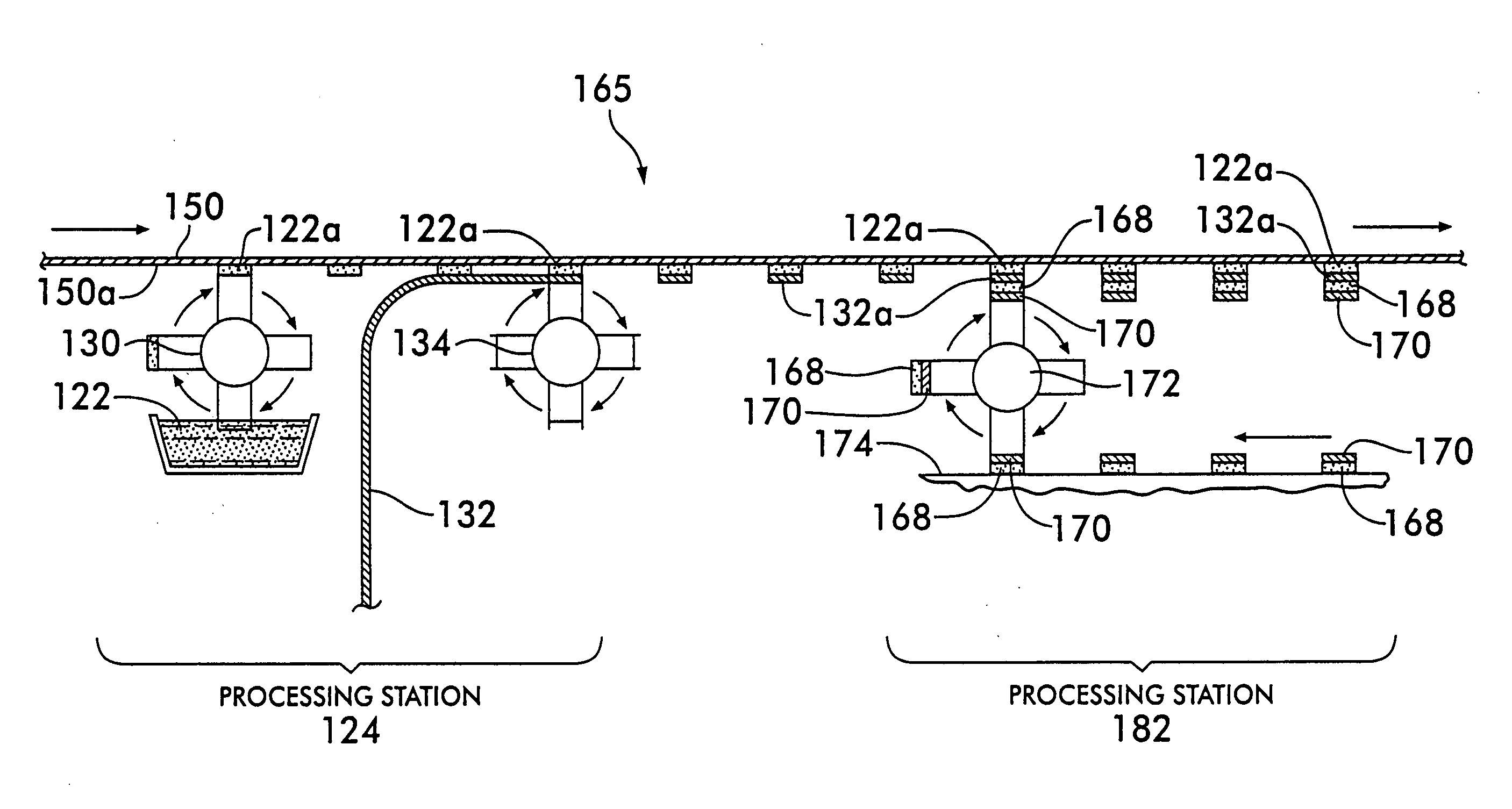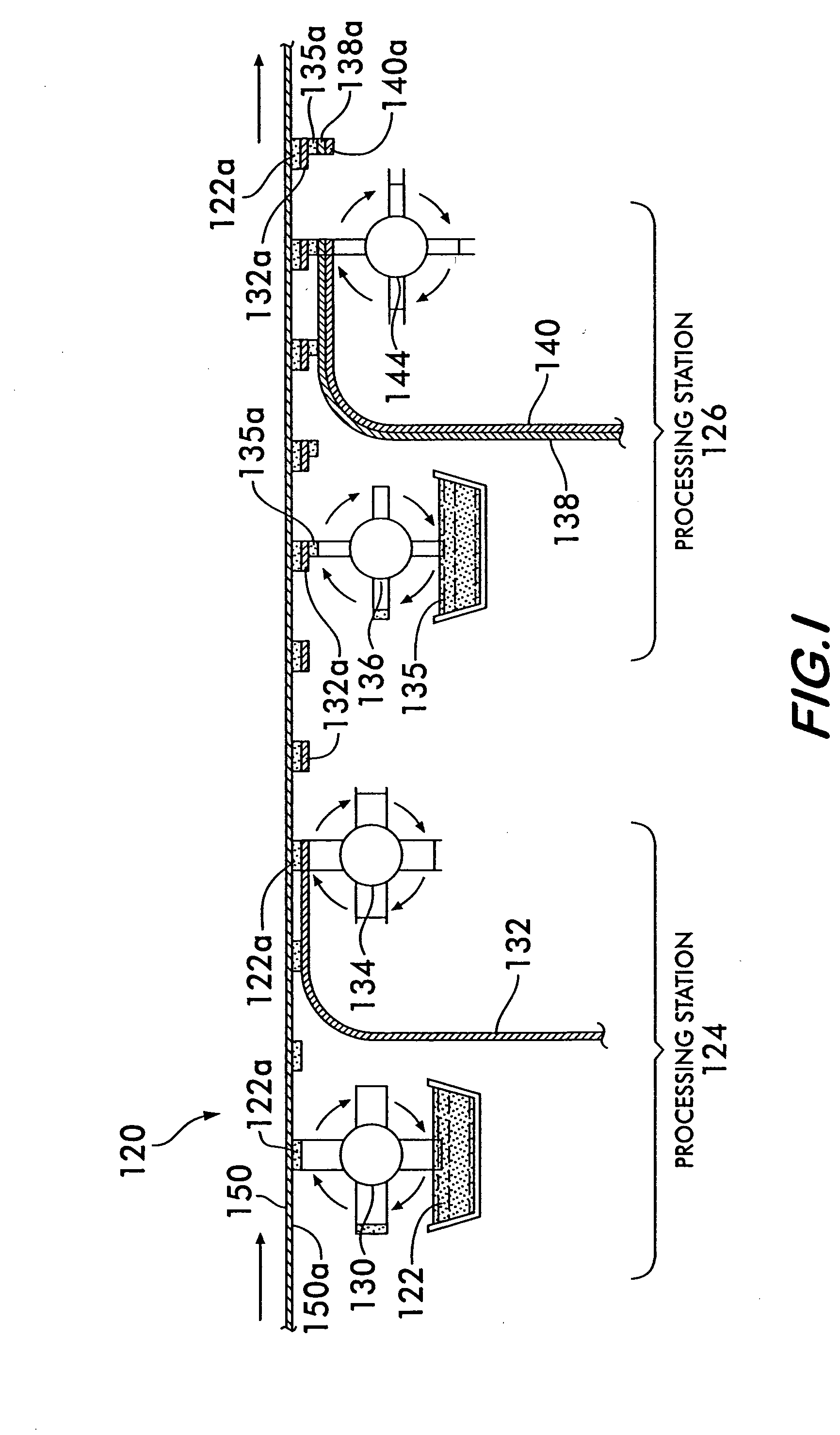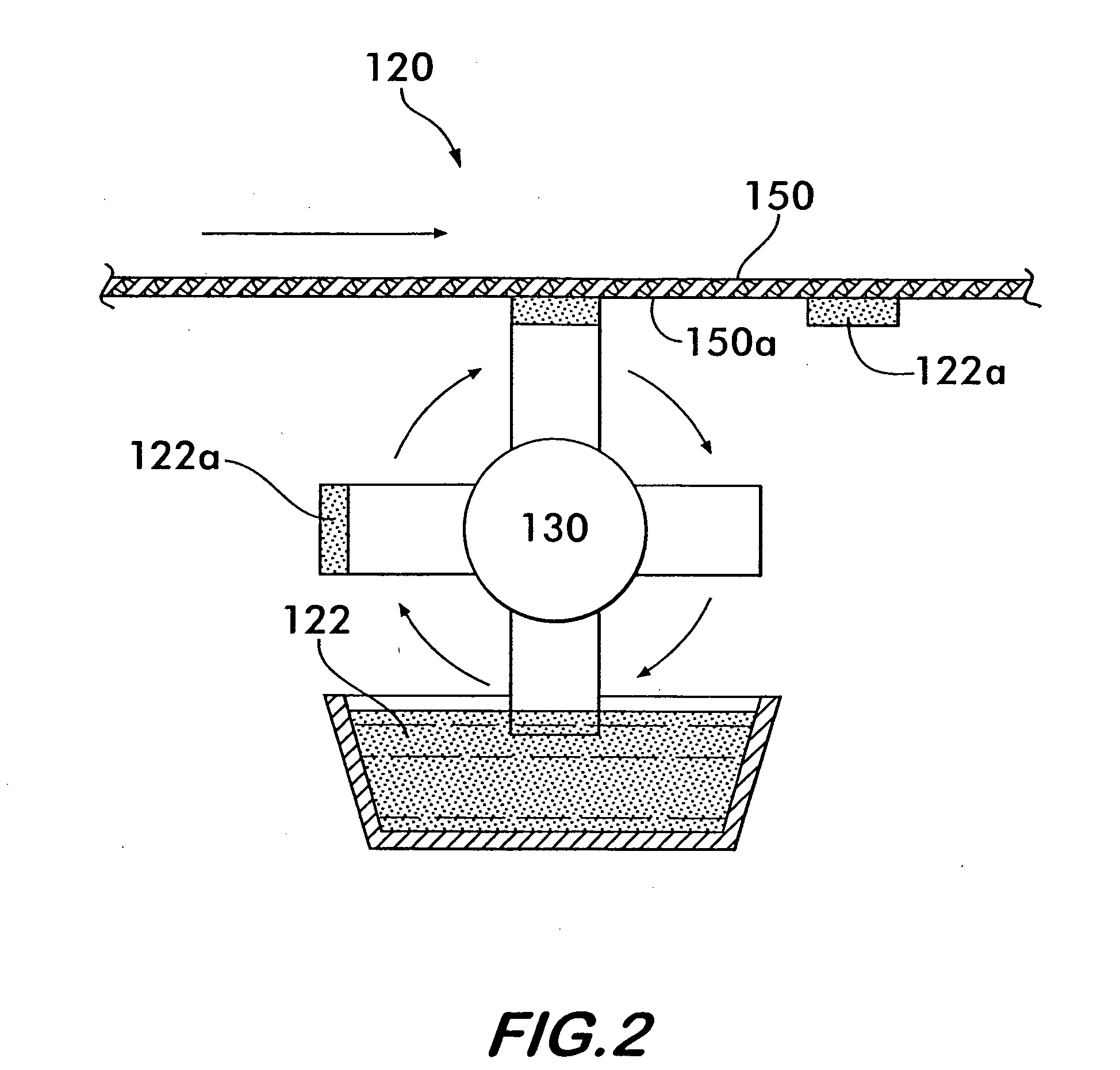Tag having patterned circuit elements and a process for making same
a technology of circuit elements and tags, applied in the field of security tags, can solve the problems of limiting the number of different kinds of materials that can be used to form substrates, the cost of the substrate itself and the design limitations placed on the tags, and the fabrication of the elements of the lc-based tags
- Summary
- Abstract
- Description
- Claims
- Application Information
AI Technical Summary
Benefits of technology
Problems solved by technology
Method used
Image
Examples
Embodiment Construction
[0064] Referring now to FIG. 1, there is shown a schematic representation of a process 120 for fabricating a security tag according to one preferred embodiment of the invention. The process can be used for producing a security tag having a dipole and a security tag having an inductor and a capacitor. In order to facilitate an understanding of the tag fabrication process 120, FIGS. 2-5 show enlarged representations of selected portions of the schematic representation of FIG. 1.
[0065] In the tag fabrication process 120, an adhesive material 122 is applied to a surface 150a of a substrate to form a first patterned adhesive layer 122a. The pattern of the adhesive corresponds to the pattern of the particular portion of the component of the tag, e.g., a portion of the coil of the inductor, a plate of the capacitor, a dipole antenna, etc. The first patterned adhesive layer 122a can be applied to the substrate 150 by an adhesive transfer device 130. The adhesive transfer device 130 can be ...
PUM
| Property | Measurement | Unit |
|---|---|---|
| size | aaaaa | aaaaa |
| size | aaaaa | aaaaa |
| electromagnetic energy | aaaaa | aaaaa |
Abstract
Description
Claims
Application Information
 Login to View More
Login to View More - R&D
- Intellectual Property
- Life Sciences
- Materials
- Tech Scout
- Unparalleled Data Quality
- Higher Quality Content
- 60% Fewer Hallucinations
Browse by: Latest US Patents, China's latest patents, Technical Efficacy Thesaurus, Application Domain, Technology Topic, Popular Technical Reports.
© 2025 PatSnap. All rights reserved.Legal|Privacy policy|Modern Slavery Act Transparency Statement|Sitemap|About US| Contact US: help@patsnap.com



